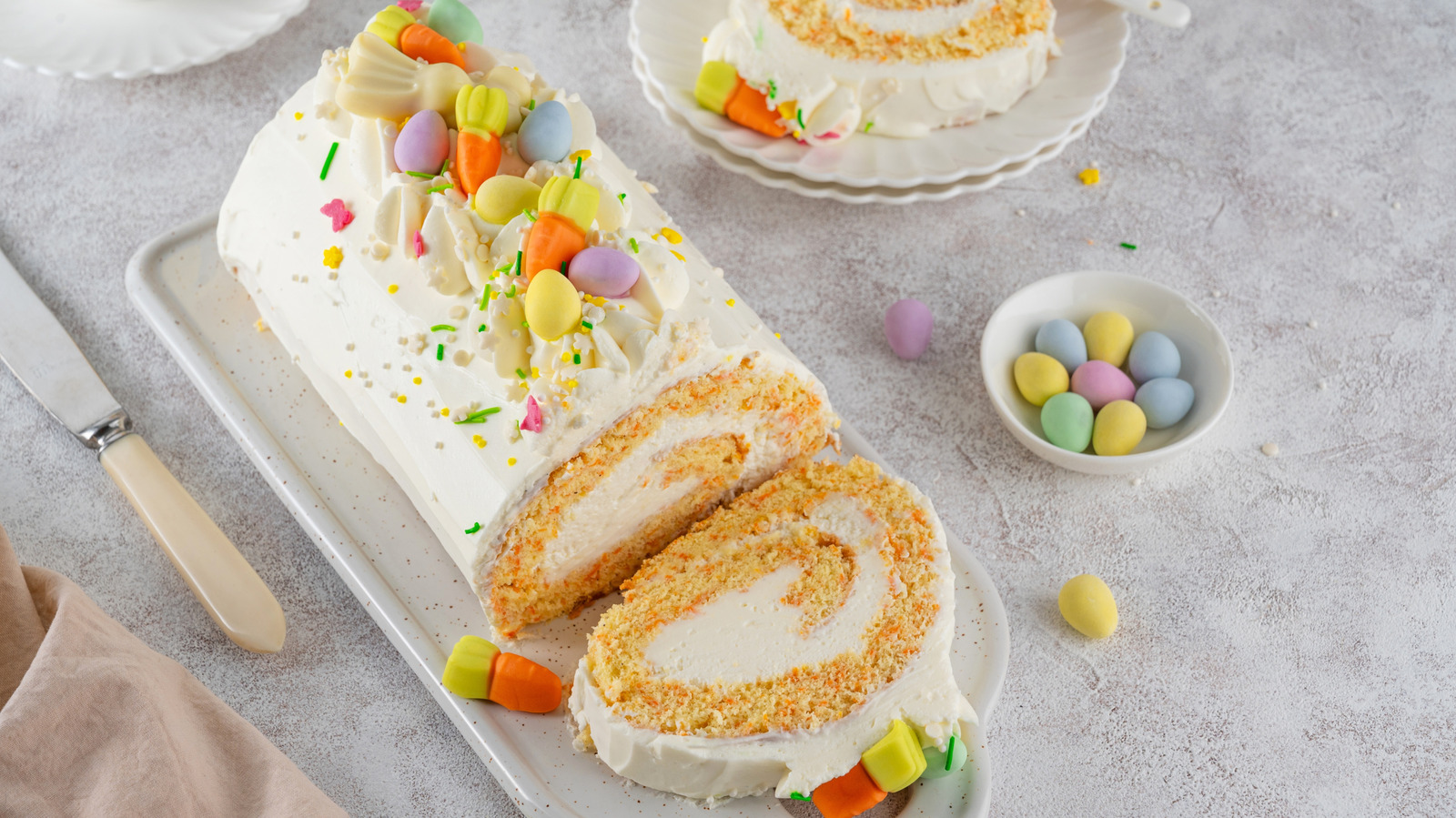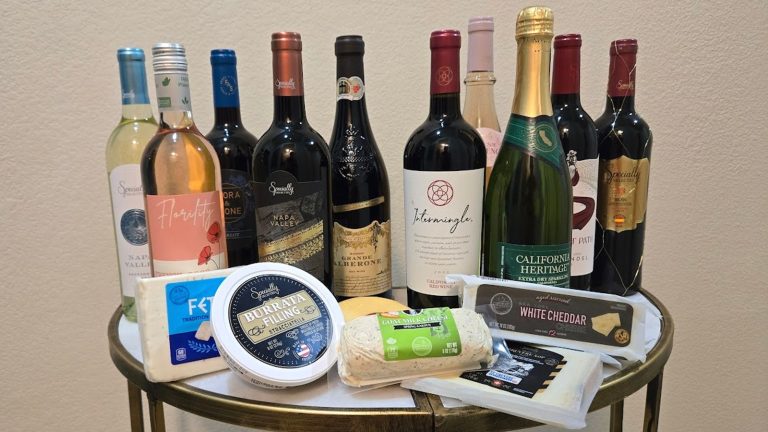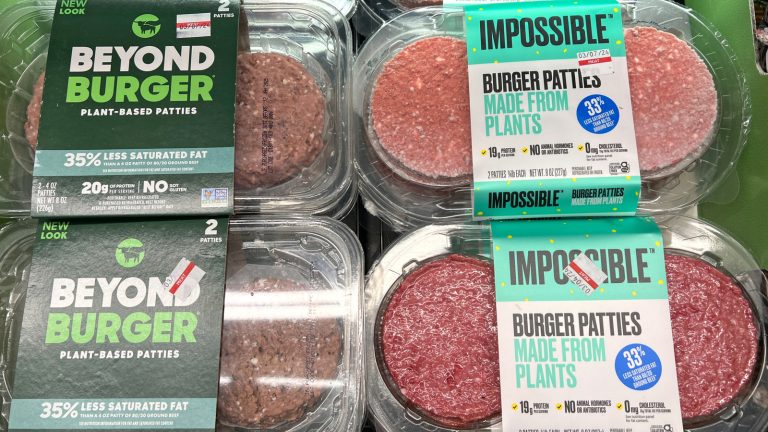We may receive a commission on purchases made from links.
There are many reasons you might want to create an original recipe. Maybe you’re putting together a book of your fave kitchen creations to share with family and friends. Possibly you’re a blogger who’s staking your claim for having invented the original lemon bar (in which case, that should be an interesting read). Or perhaps you just get asked about that kung pao chicken a lot and want to share.
Whatever the case, it’s easy to make a mistake — or a hundred — when creating an original recipe. “A beautifully crafted recipe can still fail if the wording isn’t easy to understand,” says Jem Mantiri, the blogger and recipe creator behind Jem Mantiri. “Also, just because someone can cook really well doesn’t mean they can develop recipes just as well. Especially not if they rely on eyeballing ingredients.”
Your goal is to do more than convey ingredient information, says global food blogger Shruthi Baskaran-Makanju, founder of Urban Farmie. “I’m not just putting out a recipe,” she explains. “I’m giving someone instructions for feeding themselves or their family. If that doesn’t work, they’re not just annoyed; they might not cook again for a while.” Accordingly, here are 15 mistakes to avoid when creating an original recipe.
Not testing thoroughly
According to Connie Edwards McGaughy, the recipe developer behind The Carrot Underground, “Testing a recipe is essential to ensure that anyone who follows it, whether they are an avid or novice home cook, will experience the same successful results.” As such, it’s a mistake to test casually … or not test at all. You can’t just eyeball ingredients; you can’t just throw a few things together and call it good.
“Every ingredient behaves differently depending on method, temperature, and even humidity, so making changes one at a time helps you clearly see what’s working and what’s not,” explains Nicole Hunn, founder of Gluten Free on a Shoestring. “Precision matters even more when adapting recipes for dietary needs like gluten-free, where a swap in flour or thickener can completely shift the texture or outcome.”
Even once you land on the final version, you should still test it multiple times to make sure your results can be replicated. “You don’t want others to waste their ingredients on a recipe that doesn’t work or get stuck on instructions that aren’t clear,” says Stephanie Kondrchek, founder of Steph Sunshine. She recommends you write out the recipe, leave it for a few days, then come back and follow it exactly as written to see how well it works.
Testing more than one ingredient at a time
Sometimes you get stuck on a recipe. In that case, limit your testing to a single ingredient. “If a recipe needs more work, changing one variable at a time keeps you from guessing what made the difference,” explains Marissa Stevens, founder of Pinch and Swirl. “It takes longer, but it’s worth it.” If you can, divide your main recipe into quarters, Stephanie Kondrchek says. This allows you to test four different variables by changing only one ingredient at a time, without making four full batches. Remember that according to Ina Garten’s three-flavor rule, it’s a mistake to use more than three prominent flavors in any recipe, because they’ll simply war with one another, so test accordingly.
You should experiment with tools as well as ingredients, Shruthi Baskaran-Makanju points out, because these count as variables, too. “Changing one variable — e.g. my 10-ounce versus 12-ounce mugs for a cake — at a time helps me pinpoint what’s working (or not). It’s slower, but it saves time in the long run and keeps the end result consistent and replicable!”
On a final note, says Jessie-Sierra Ross, cookbook author of “Seasons Around the Table; Effortless Entertaining with Floral Tablescapes & Seasonal Recipes,” do note the distinction between cooking and baking. Cooking is pretty forgiving, but “baking is truly a chemistry experiment, which means that adding or subtracting elements can change the acidity and liquid volume, radically altering the success of the result. For baking, changing one thing at a time is the most sensible practice.”
Changing too few aspects of the inspiration recipe
An original recipe can become your personal trademark, and the smallest changes can make a real difference. (Look no further than original brand recipes that have changed for the worse to see that this is true.) But beware: It doesn’t matter if your dish was born across the world, invented in America, or by the lady next door … don’t make the mistake of plagiarizing a recipe. Credit the creator or change it enough that it truly becomes yours, even if you simply upgrade simple dishes with small tweaks to make it feel like “you.”
Start by following the recipe as it is, Jem Mantiri advises, so you know what it’s supposed to look and taste like. Then you can begin to tweak. However, she says, “Please don’t come back and write a bad review about the recipe, since you’re technically making a completely different recipe by modifying it too much!”
Use this as your litmus test, Stephanie Kondrchek says: Is what you’ve created better than what already exists? “If I find a recipe that I can’t improve on, I’d rather send my readers to that recipe instead of creating one more similar recipe,” she says. Her personal challenge is creating vegan dishes that omnivores can get behind. “Before I publish a recipe, I always ask myself whether it meets the ‘wow’ standard.”
Ignoring tools and equipment
Another mistake when creating original recipes is to leave out notes about tools and equipment, both of which are critical and not necessarily intuitive. “Knowing what equipment is needed upfront prevents that frustrating moment halfway through when someone realizes they need a stand mixer they don’t own,” Marissa Stevens says. “I want readers to feel prepared before they start.”
A clear list of tools, both optional and required, “allows the home cook to gather their arsenal or, if needed, go and purchase them ahead of time,” Jessie-Sierra Ross says. This is especially important for unusual tools. However, Shruthi Baskaran-Makanju, you shouldn’t assume that everyone has a stand mixer or high-speed blender. Take the time to spell out what’s essential.
Failing to define terminology
Once again, it’s a mistake to assume that everyone knows what you know. “I learned this the hard way when I married my husband,” Shruthi Baskaran-Makanju says. “‘Soft peaks’ doesn’t help if someone’s never whipped cream — quick explanations make a recipe feel approachable!”
The same goes for culinary terms such as sauté, mince, or fold, Connie Edwards McGaughy says. “Whenever I use specific culinary terms, I always try to include a brief definition, so that the reader won’t need to look up the meaning elsewhere.” This also prevents them from potentially finding different meanings that may not fit your intent. Ideally, in digital media, Marissa Stevens suggests including a process shot as well.
The same is important for ingredients that some users may find a little more out there. “For example, my vegan recipes often use aquafaba as an egg replacer,” Stephanie Kondrchek says. “Since some readers might not know what that is, I always mention that aquafaba is the liquid from a can of chickpeas.”
Forgetting about substitutions
Ina Garten believes that, with just 10 adjustable recipes, you can become a capable cook. There is, therefore, great value in noting substitutions and adjustments in your recipe. In Jem Mantiri’s case, “This is especially important since I focus more on simpler recipes, where my audience appreciates being able to cook a recipe with the least amount of ingredients possible.” Plus, she says, it allows her to offer variations, making it easier to modify the recipe. Way to follow the Barefoot Contessa approach, Jem!
It’s not just about flexibility, though. Sometimes home cooks simply won’t have an ingredient on hand. If they have almost but not quite everything to make your dish, it’s helpful to let them know how they can make up for that missing ingredient. Or sometimes, Stephanie Kondrchek says, they’ve got a dietary restriction or allergy that needs accommodating. Where possible, test out your subs before recommending them. “I always note whether I’ve tested the substitution or not and how the substitution will affect the final dish,” she says.
Neglecting method variations
Another common mistake? Neglecting variations in cooking or baking methods as well as ingredients. Marissa Stevens likes to give options such as “make ahead,” “stovetop or oven,” or “mixer or by hand.” She finds this helps readers adjust the recipe to their needs, so they can better fit it into their cooking styles, available tools, and schedules. For instance, Shruthi Baskaran-Makanju says, “Some folks want to roast instead of air fry, or prefer stovetop to slow cooker. I give them options when I can.”
This is especially important with recipes that have a number of approved avenues of creation, Jessie-Sierra Ross says: “Macarons, for example, have two or three standard techniques, but some are easier than others. Mentioning them in detail within the notes section is a nice bonus for your readers.”
Listing ingredients out of order
“Listing ingredients in order makes the whole cooking process flow better,” Nicole Hunn says, which is why you should take the time to order them as necessary rather than compiling a higgledy-piggledy list. “When you’re elbow-deep in mixing, the last thing you want is to go hunting for where the salt or vanilla is hiding. It also mirrors the natural progression of a recipe and helps reduce errors.”
The best way to think of it, Shruthi Baskaran-Makanju says, is to mirror how people cook: Top to bottom. “I’ve found that jumping back and forth leads to mistakes (and often, missed ingredients you don’t catch until later), especially if you’re multitasking or wrangling your toddler while making dinner.” (Heard, Shruthi.)
The only exception, notes Connie Edwards McGaughy, is in the body of a recipe post, where she may list them in order of importance when discussing the finer points of the dish. However, in the recipe card itself, she always orders them by use.
Skipping weights
Many home chefs are used to reading recipes that list out ingredients by volume — quarts, pints, cups, tablespoons, and teaspoons, for example. However, Jessie-Sierra Ross says, “The volume measurements are only really used in the United States, while the rest of the world uses weight. To allow all cooks to be comfortable with your recipes, it’s a lovely touch to list both systems on your recipe cards.” When measuring by weight, the best practice is to use grams, she adds, and professional bakers always go by weight.
It’s a mistake to ask people to rely on conversion charts, moreover. “Online Imperial to Metric (volume to weight) calculators aren’t very accurate,” Ross says. “They do best with dry goods, proteins, and liquids, but for items like fresh herbs, veggies, or spices, sometimes you have to take matters into your hands.” A digital cooking scale is very helpful here. Share exactly what tool you’re using for weight so that folks who don’t have a measurement device at home can replicate it exactly. Or you can recommend a highly reviewed option, such as the Amazon Basics Digital Kitchen Scale with LCD Display.
Don’t get frustrated at this step. “Recipe development and recipe writing are also two very different skills, and they take practice,” Ross says.
Inaccurately conveying cook time versus doneness
Ever made a batch of brownies that came out looking like one big, burnt, tragic mistake? That’s because cooking time and doneness are not the same thing. For this reason, “Doneness cues are way more helpful than cook times,” says Nicole Hunn. “No oven or pan behaves the same, and ‘until golden brown with slightly crisp edges’ is far more reliable than a vague ‘bake for 20 minutes.'”
It’s hard to overstate how much ovens affect cooking results. “Older ovens may not have tight seals,” Connie Edwards McGaughy says. “Electric cooktops take longer to heat or cool than gas ranges. Even altitude can affect certain recipes.” Plus, internal temperatures may cycle up and down by as much as 60 F during cooking, while calibration can be off by 100 F or more. Seriously, yikes.
“The more you cook, the better you get at knowing what a dish should look, smell, and even sound like,” Marissa Stevens says. And again, make sure you tell people what tools you’re using. If your trusty thermometer isn’t made any longer, give them the next-best option. Use an old-fashioned analog type? Recommend the KT Thermo Instant Read 2-Inch Dial Thermometer. Need a digital device? The Alpha Grillers Meat Thermometer might do the trick. Make sure your recommended equipment matches the intended use — e.g. baking, grilling, or boiling.
Disregarding troubleshooting
It’s a mistake to turn a blind eye to issues just because you haven’t faced them with this recipe, or don’t face them any longer. Remember, most people will be attempting this dish for the first time, or they wouldn’t need a new recipe, right?
“I often advise my readers to read the entire recipe thoroughly before beginning. Many common mistakes can be avoided by knowing every step in advance,” Connie Edwards McGaughy says. “I also try to provide tips on how to prevent or resolve simple issues such as ways to make sure your vegan quiche sets properly, and how to keep a pie shell from browning too much.” Make sure also to note where something might seem like a problem, but isn’t. “A short note like ‘the dough will seem dry at first’ can save someone from giving up too early,” Marissa Stevens says.
The best way to determine where troubleshooting might be needed is to keep good notes about your own troubles along the way. If you prefer a handwritten approach to getting flour in between the keys of your laptop, get a large, sturdy notebook that can handle the mess, such as the PAPERAGE Lined Journal Notebook.
Overlooking storage
How well a recipe keeps, how to keep it fresh as long as possible, and how to reheat it are all questions that you should answer in an original recipe. Letting people figure it out for themselves is a mistake, especially if you hope for good reviews as part of your recipe creation. (For those who are doing it as more of a hobby or for social benefit, this may not matter as much.)
As such, make sure to give clear storage instructions. “People want to know what to do with leftovers or recipe components when they can be made in advance,” Marissa Stevens says. “It’s also helpful to know what keeps (at room temp or refrigerated) and freezes, and for how long.” If you really enjoy a set of containers such as the Amazon Basics Leak-Proof Glass Locking Lids Food Storage Containers or an ingredient storage system like the Vtopmart Airtight Food Storage Containers with Lids, tell people that. They’ll appreciate it.
Adding in too much additional information
Should readers skip the headnotes? This all-purpose phrase used to refer to the short blurb at the top of a recipe (think “Mastering the Art of French Cooking”) but now include everything on a blog post that comes before the ingredients and instructions. While the preliminary sections often contain useful content, it’s a mistake to go overboard.
“Too much information (especially for simple steps that most people know already) can overwhelm readers,” Jem Mantiri says. “I try to keep the writing concise, format clearly with bullet points, and focus on what truly helps the cook succeed.” The exception is ingredient substitutions or more technical cooking aspects, Jessie-Sierra Ross says. “It’s important to remember we aren’t always speaking to experienced cooks.” Nicole Hunn agrees, adding that “when it comes to things like gluten-free flours or substitutions, I always think it’s worth explaining why a certain flour blend was used or why something like xanthan gum might be necessary.”
Expecting immediate results
It’s a mistake to give up after a trial or two, because you’ll never hit on the perfect original recipe with that attitude. “If you’re developing a cocktail or a sauce recipe, it’s much easier to taste and make adjustments on the spot, so you may only need a few trials,” Stephanie Kondrchek says. But, she adds, “Baking recipes can take much longer to get right because a single change that improves one aspect might have a negative effect on something else. I’ve spent months on some baking recipes, with 10 or more trials before I was happy with it.”
Accept this mindset. On average, Shruthi Baskaran-Makanju tests her recipes about three times. Jem Mantiri does about eight different variations if she’s making a brand-new recipe, while Jessie-Sierra Ross tests her recipes two or three times over after she identifies what she thinks is the perfect approach. Marissa Stevens does an average of three to six rounds. Everyone is different, but the experts? They don’t give up easily.
Keep the user in mind
The biggest mistake of all when creating an original recipe? Forgetting the user. “Your tone matters as much as your timing and measurements,” Marissa Stevens says. “You’re not just giving someone instructions; you’re giving them the confidence to try something new.” Make sure your phrasing, the level of detail, and even the rhythm of the sentences speak to readers, she advises, and be open to their questions and comments.
Remember, too, that the goal is service. “Very few of us get rich doing this, and most of us barely break even,” Connie Edwards McGaughy says. “We dislike those annoying ads on our websites as much as our readers do, but unfortunately, they are our main income source.” If you’re going to make a go of blogging, accept the downsides and celebrate the comments. And readers, leave positive comments wherever you can!





